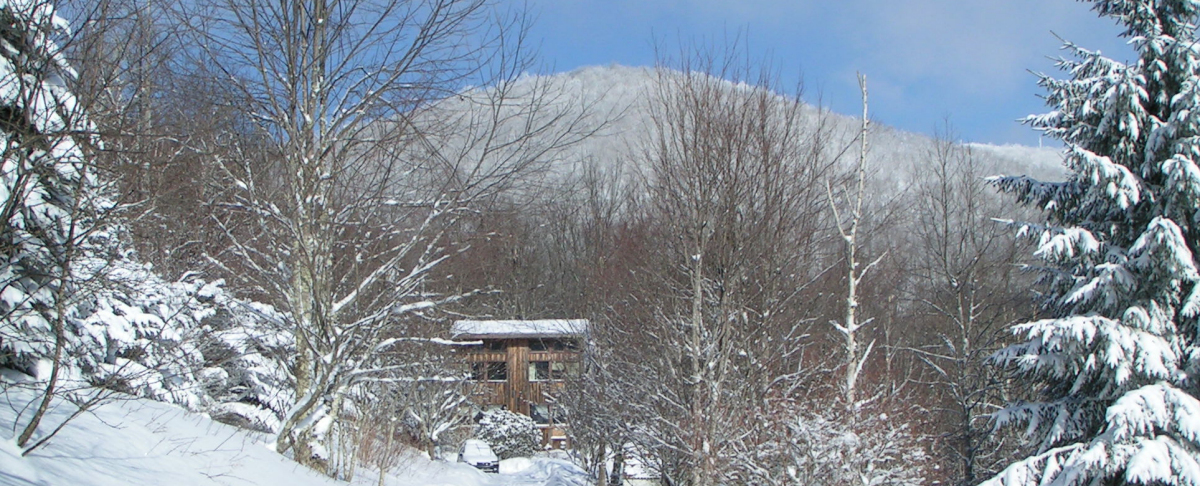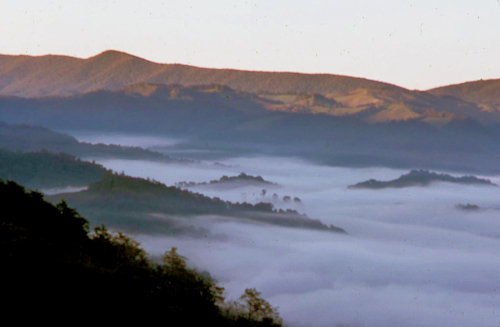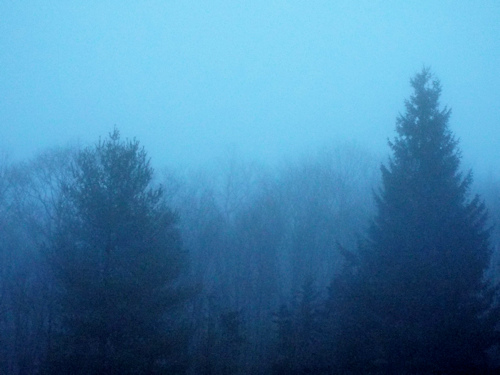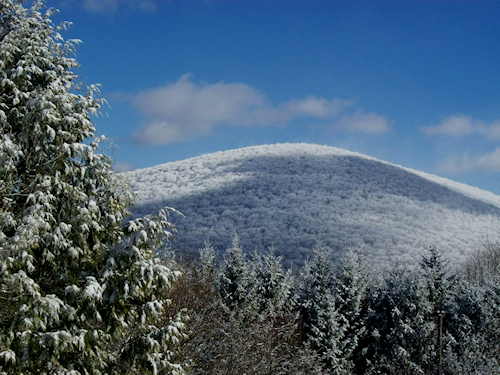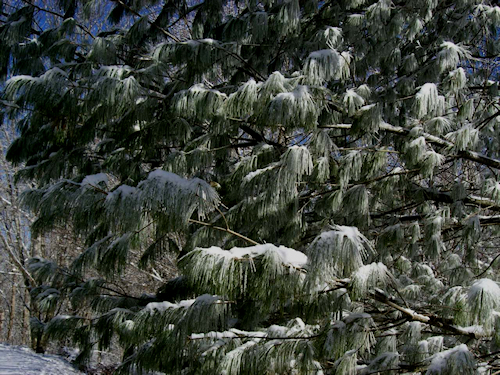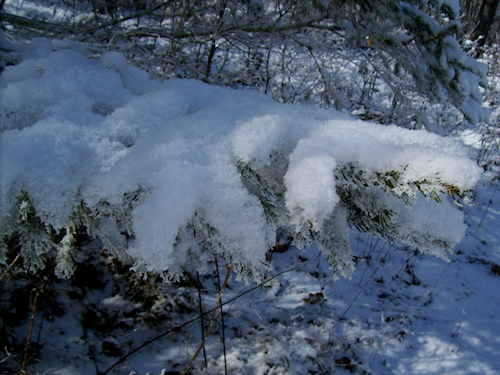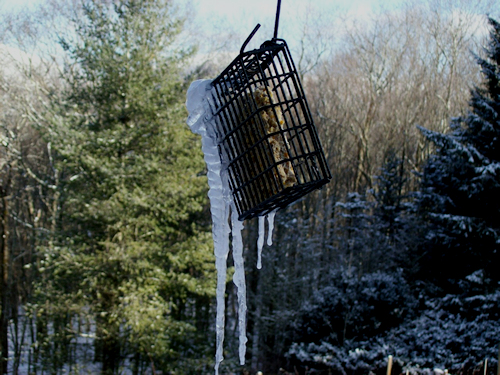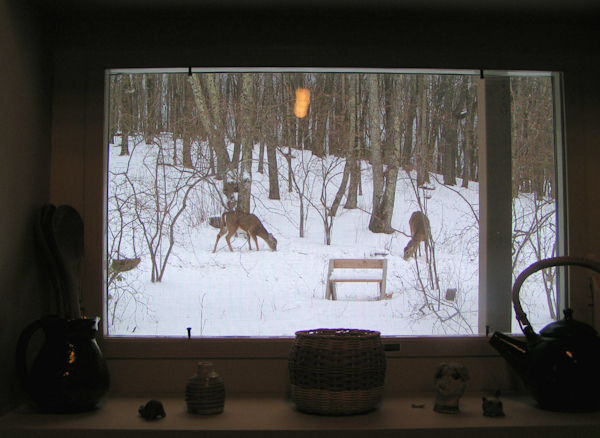
The kitchen window makes a perfect frame for this winter scene.
When we go into town or travel to cities around the country, we are struck by how different our daily environment is. The close proximity of other people and houses and streets necessitates different living conditions for city dwellers and even those living in closer rural communities. Obviously different people like different things. Many people would not care to live at the end of the road here on our mountainside, but this is just what we were looking for. I can understand the many reasons why people choose to live in cities, but I’m always glad when we get back here to our homeplace. One of the main reasons is that I love the openness of our house compared to the much more closed nature of many houses and other buildings, shut off from natural world, isolated from the occupants’ surroundings.
Our house has lots of windows. With the exception of cold wintry days or blowing rainstorms the windows are usually open. We have shades on most of our windows, but they are hardly ever pulled down. Living where we do at the end of our driveway at the end of our road, we have no reason to block the outside world. We can only see one other house from our location and we can barely see that when the trees are leafed out. We have no traffic passing by; the rare vehicle that appears is either for a delivery or someone who has taken a wrong turn.
The openness of the windows allows us better to see and experience the natural world in which we live. We are open to the sounds and scents that surround us. We hear the winds blowing over the ridges and through the trees. Dogs and coyotes bark and howl in the distance, cows moo in the pastures, and owls call in the night. The birds, squirrels, raccoons, and other animals come onto our deck or pass through the yard. The deer and turkeys move through the edge of the woods or walk down our drive. The clouds move across the sky and their shadows play across the mountains. We are aware of these things because our windows are uncovered. We delight in these experiences. They bring joy to our daily lives. We are so glad to be here.
Here are a few views from within our home.
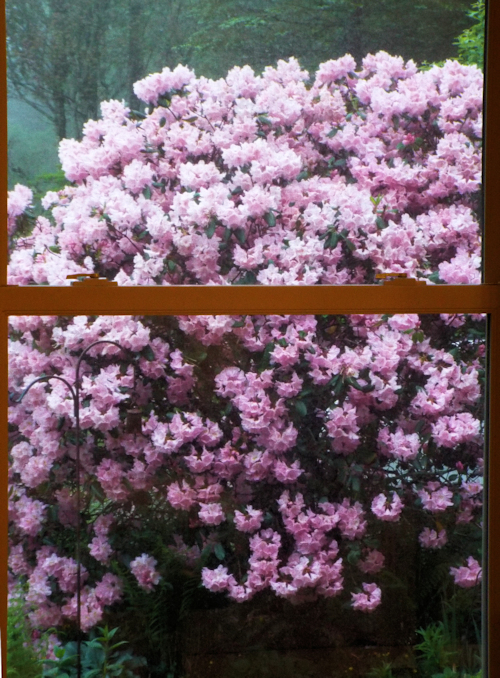
Rhododendron in full bloom viewed through our living room window
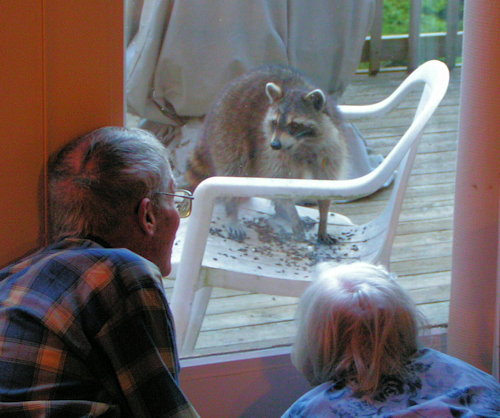
Some visitors watching another visitor and vice versa.
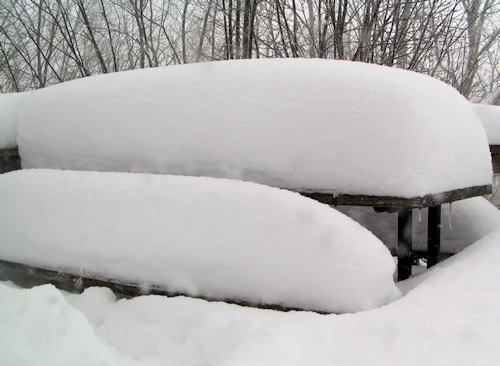
It’s best to stay indoors to look out at this picnic table on our deck.
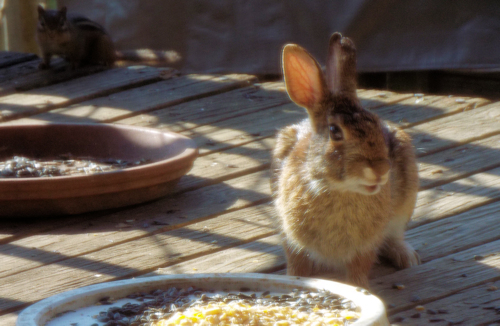
Rabbit and chipmunk enjoying lunch on the deck.
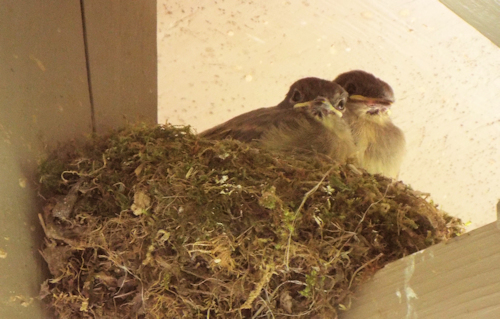
Eastern phoebe babies viewed through our porch door. Adult phoebes have used this nest for several years.
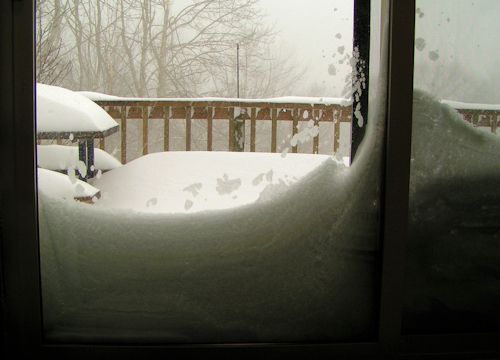
We look out at the snow because we can’t open the door.
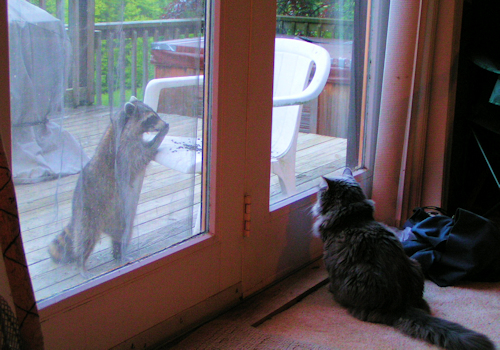
Even our dear cat enjoys observing the outside world through the door.
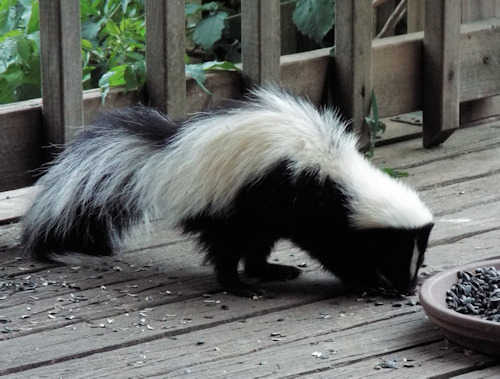
One of our skunk friends. Some visitors are best viewed from inside the house.
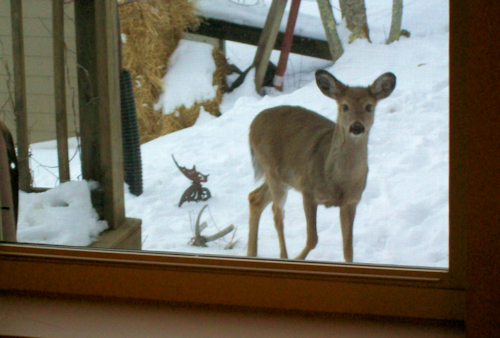
We look out the window while this deer looks in.
